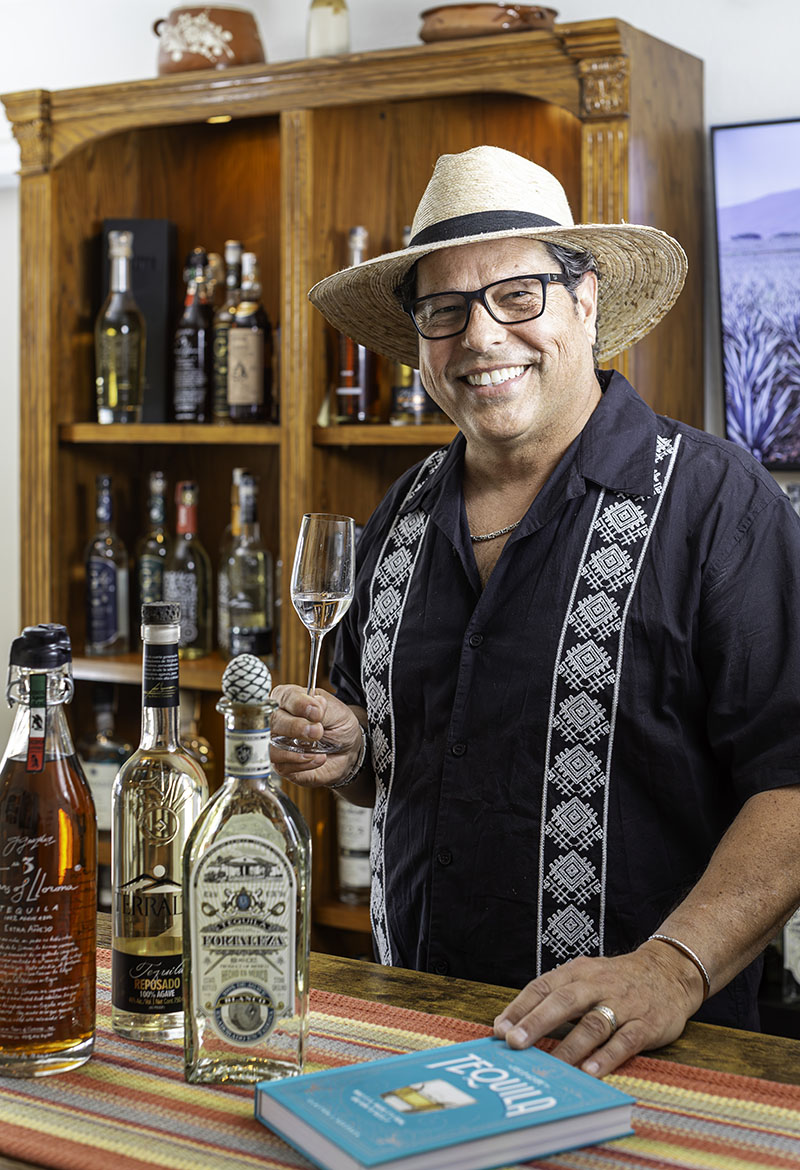Certified expert Javier Gil shares the spirit’s intricacies.
With an infectious smile and indisputable charisma, Javier Gil warmly invites me into his home to discuss the fascinating world of tequila. His goal is clear: share a passion for tequila and bring this knowledge and appreciation to the Reno-Tahoe community.
Tequila, an often-misunderstood spirit, offers much more to appreciate beneath its surface, he says. From the land that nurtures its agave plants to the artisanal process that shapes its production, every step in the making of good tequila matters. In fact, its nuances are so profound that a certification now exists for those who wish to become expert catadores, the Spanish term for professional tasters.
Gil’s passion is deeply rooted in his Mexican heritage and his family’s legacy as tequila makers.
“I was born in Michoacan, Mexico, but grew up in California. Interestingly, some of my Mexican family members were involved in the tequila business, cultivating agave plants and producing tequila. As with most people, my first experience with tequila was not a good one,” he admits.
Even so, he started his journey as a professional catador in the late ’90s after a seasoned bartender introduced him to 100 percent blue agave tequila. More recently, he gained a tequila catador certification under Ana María Romero in Guadalajara, Jalisco, one of the world’s first official catadores of tequila and one of the most esteemed tequila authorities.
Tequila 101: A Lesson in Flavor
According to the expert, one of the indications of a good tequila is displayed right on the label. A high-quality tequila should proudly declare itself to be 100 percent blue agave tequila, indicating that it contains no additives. For those with curious palates, Javier recommends the Tequila Matchmaker app to discover which brands employ the right processes.
What about pairing? Blanco tequila, known for its pure, unaged agave flavor, pairs well with light and fresh foods such as seafood or simple appetizers. Reposado tequila, with its mellowed agave taste, goes nicely with grilled meats, chicken, and dishes that have a bit of char or smokiness. Añejo tequila is a great match for richer, more robust dishes. It goes well with red meats, barbecue, mole, and dishes with complex flavors. Extra añejo tequila is the most aged and has a depth of flavor similar to fine, aged spirits. It pairs wonderfully with strong flavors such as blue cheese or dark chocolate, and even serves as a digestif after a hearty meal.
Gil also is happy to debunk a common myth.
“The idea that good tequilas must be expensive as a guarantee of quality is one of the most common misconceptions about tequila,” he says. “It can be the case, but it’s not necessarily true.”
In his view, as long as you choose a 100 percent blue agave tequila and stay away from those with additives, your definition of “good tequila” will boil down to your tastes.
Finally, I asked him the million-dollar question: “Is there a right way to drink tequila?”
“It really depends on personal preference,” he says. “Taste various brands to identify your favorite profile, and, if possible, opt for those produced in the traditional ways.”
There’s one golden rule, though: “A good tequila is not to be shot. You sip it!” he says.
When it comes to cocktails, Gil recommends consulting your bartenders about the brands they prefer and aim for additive-free tequilas. Really, your body will thank you.
For details, follow Gil on Instagram at Tequilalifecoach.
Tequila Quick Guide
Tequila Types by Age
- Blanco: bottled immediately after distillation or aged for no more than two months
- Reposado: aged two to 12 months in oak barrels
- Añejo: aged one to three years in oak barrels
- Extra Añejo: aged three years or more in oak barrels
Other Types
- Joven: a mix of blanco and aged tequilas
- Cristalinos: a recent favorite type that involves filtering aged tequilas through activated charcoal to remove color and mellow its intense flavor


